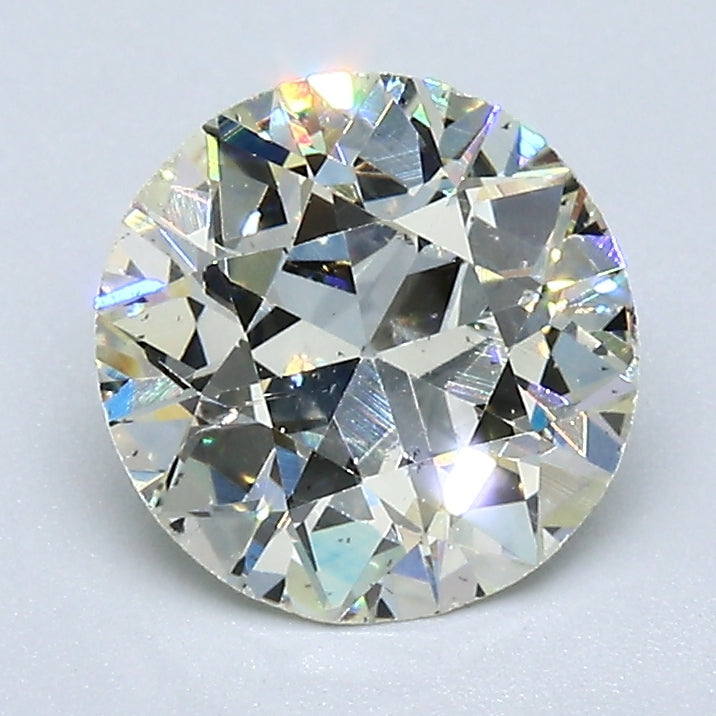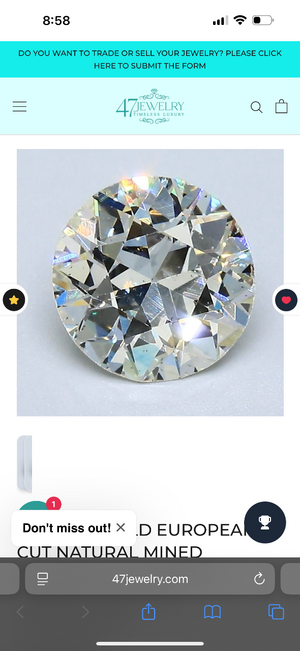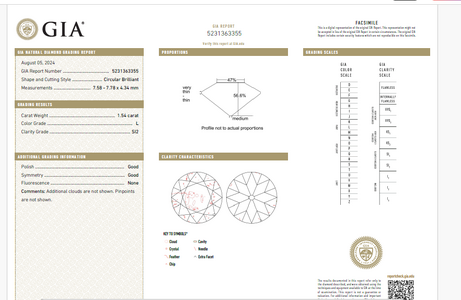Cerulean
Ideal_Rock
- Joined
- Sep 13, 2019
- Messages
- 5,137
Is this diamond particularly fiery or is just this video?
What am I looking at? It seems especially fiery compared to other OECs and I’m mesmerized by it!

 47jewelry.com
47jewelry.com

What am I looking at? It seems especially fiery compared to other OECs and I’m mesmerized by it!

1.54 Carat Old European Cut Natural Mined Diamond L Color SI2 Clarity With GIA Certificate
Shape:Old European Cut, Carat Weight:1.54, Color Grade:L, Fancy Color:N/A, Fancy Color Intensity:N/A, Fancy Color Overtone:N/A, Clarity Grade:SI2, Length:7.78 , Width:7.58 , Depth:4.34 , Cut Grade:N/A, Polish:Good, Symmetry:Good, Fluorescence:None, Stone Ratio:1.03, Table %:47, Depth %:56.5...
 47jewelry.com
47jewelry.com










300x240.png)